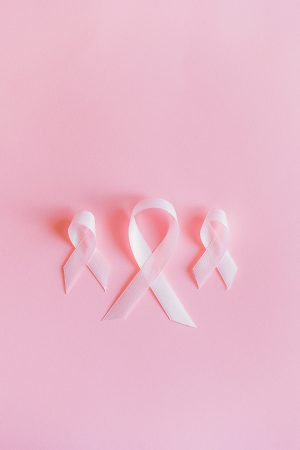In the busyness of life, the great advances being made in women’s health are not always foregrounded, but they’re there and they’re saving lives. This Women’s Day, we’re celebrating these strides!
The global average for women’s lifespan is increasing
If you were reading this during the post-war 1950s, the idea of living into your 80s or 90s would have seemed unthinkable. At that time, according to the study ‘Life Expectancy’ compiled by Our World in Data, the global life average topped out at just 45 years.
Today, the global life average is 70 years.
“Over the last 200 years, people in all countries in the world achieved impressive progress in health that lead to increases in life expectancy,” writes the authors.
Even in South Africa, where public health suffers under the heavy burden of HIV/Aids, TB, heart disease and diabetes, we’ve enjoyed a steady increase in women’s life expectancy.
In 1970, only 50 years ago, the average life expectancy for women was 55 years, while today we straddle the global average with 68 years. In comparison, South African men have a lifespan average of only 61 years.

Pexels
Breast cancer screening is improving
Precision screening is a hot topic in the field of breast cancer research.
While mammograms are still the best and first line of defence, the potential for overdiagnosis and false positives remains high. Researchers are therefore looking to limit the possibility of this by tailoring screening to take into account a woman’s individual risk beyond factors like her age, to those that include her family history, her lifestyle and even her genetic make-up.
The mammogram might also be getting a screening reboot. 3D mammography, also called digital breast tomosynthesis, uses a series of X-rays to create a 3D image of the entire breast, revealing a broader range of breast tissue more clearly than 2D mammography can. It’s hoped that this will make breast tumours or other changes in the breast easier to find, especially at less advanced stages.
Tackling the dual issues of screening and the value of 3D mammography, is the Tomosynthesis Mammographic Imaging Screening Trial (TMIST), a randomised study started in 2017 in North America and looking to enrol some 165 000 women between the ages of 45 and 74 by the end of its run. The study will not only provide a decisive comparison of 2D and 3D mammography, but aims to improve screening by creating the world’s largest curated data set of breast cancer clinical data.
According to Dr Mitchell D Schnall, co-chair of the ECOG-ACRIN Cancer Research Group running the trial:
“TMIST can show the way to a precision screening approach. This trial can help us learn how to improve the process for identifying high-risk patients and utilise both digital mammography and digital breast tomosynthesis better.”
ALSO SEE: 11 health screenings women should have
Better detection and intervention for pre-eclampsia
A cutting-edge study reported in Nature earlier this year, revealed that scientists at King’s College in London have isolated the molecular profile in blood that signifies whether a pregnant woman is at risk of pre-eclampsia. It’s a major turning point in medical history.
According to FIGO, the International Federation of Gynaecology and Obstetrics, pre-eclampsia is still one of the leading causes of maternal and perinatal morbidity and mortality, killing 76 000 women and 500 000 babies each year, and increasing a woman’s chance of cardiovascular disease post-birth.

Pexels
Up until this discovery, pre-eclampsia was only diagnosable in the third trimester when the mother started experiencing symptoms.
Speaking to ScienceDaily, Professor Rachel Tribe at the Department of Women and Children’s Health, King’s College London, says of the find:
“Excitingly, this requires only a single blood sample and has potential to identify women at risk much earlier in pregnancy so that they can be more closely monitored and treated by the clinicians involved.”
ALSO SEE: 10 things you need to know about blood clots
HPV vaccines saves lives
The human papilloma viruses (HPV) vaccine may be the closest thing we’ve currently got to a cancer vaccine.
Almost all cervical cancer, the second most common form of cancer suffered by women, is caused by HPV. While we’ve known this for some time, researchers are now aware that HPV also plays a factor in many other cancers, including those of the head and neck.
Licensed in 2006, the HPV vaccine made its way to South Africa only in 2014, with rollouts starting in earnest in 2019 before being disrupted by COVID-19 in 2020, but the long-term benefits are already being documented in other countries.
According to the CDC in the US:
‘In the 10 years after the vaccine was recommended in 2006 in the United States, quadrivalent type HPV infections decreased by 86% in female teens aged 14 to 19 years and 71% in women in their early 20s. Research has also shown that cervical precancers are decreasing.”
Slowly, women are starting to speak up about pain
Chronic pelvic pain, the kind of pain that ranges from a dull ache to a stabbing fire dagger in any part of your lower abdomen, affects between 14% to 32% of women worldwide.
The underlying causes of chronic pelvic pain are serious, ranging from endometriosis, uterine fibroids, pelvic inflammatory disease, PCOS, excessive dysmenorrhea and beyond, and yet women are rarely taken seriously by their healthcare professionals when they try to speak about the pain they are experiencing.
Studies have confirmed that gender bias plays a major role in how women’s pain is perceived and treated, ultimately leaving female patients with little recourse after being told they’re exaggerating their pain, that its normal or that pain relief drugs are enough.
Luckily, with a growing awareness around these underlying gynaecological issues and a slow but steady confidence and strength in speaking up about pain and expecting it to be taken seriously, modern women have a far greater chance of having their medical needs met than ever before.

Pexels
Un-bee-lievable!
Research in breast cancer treatment received a wow-worthy update in 2020 when Australian scientist Dr Ciara Duffy and her team revealed that bee venom is a cancer killer. Melittin, the molecule in a honeybee’s venom that creates the painful sensation, punches holes in the outer membrane of cancerous cells and disrupts their ability to divide and grow.
“The venom was extremely potent,” Dr Duffy told Medical News Today. “We found that melittin can completely destroy cancer cell membranes within 60 minutes.”
Miraculously, melittin is effective on other cancers, including ovarian cancer, takes down even the most aggressive and treatment- resistant breast cancers, and doesn’t effect healthy cells.
Sweet loving to stave off menopause?
A study published by the University College of London suggests that women who have sex once a week or even once a month, are less likely to enter menopause early.
According to the study authors, findings “suggest that if a woman is not having sex, and there is no chance of pregnancy, the body “chooses” not to invest in ovulation, as it would be pointless”.

